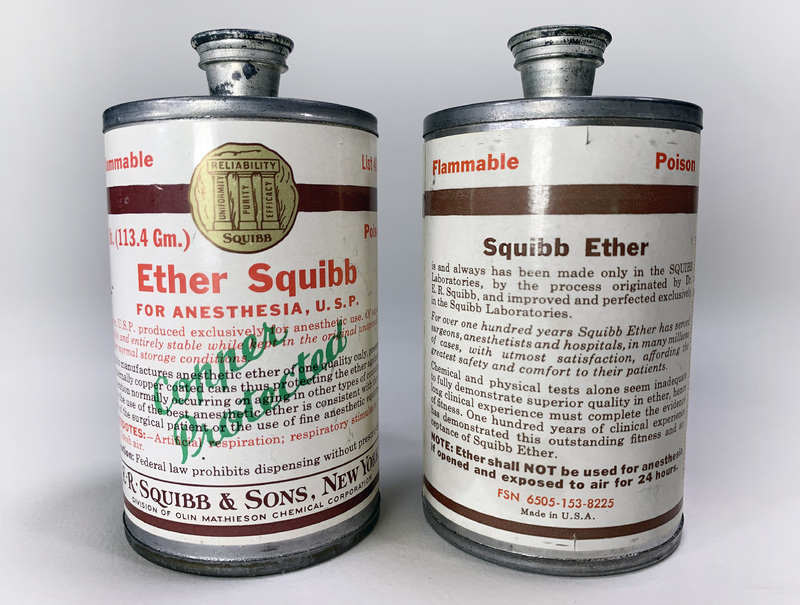Squibbs
Ether Squibbs, circa 1950s
Edward Robinson Squibb developed a method for the distillation of ether and founded a company in 1858 to sell his eponymous product for surgical anesthesia. The drop ether method was widely used when anesthesia machines were unavailable. Ether was completely replaced by newer anesthetic gases by the 1970s.
Open Drop Method of Ether Delivery in Brigham Operating Room, circa 1930s
Careful examination of this photograph taken in an operating room of the Peter Bent Brigham Hospital reveals some remarkable details. Note the nurse anesthetist applying drops of ether from a “Squibb” (canister) to a Ferguson style mask (flexible wire frame wrapped with cloth and flannel cover) over the patient’s face. To her left can be seen her Squibbs supply. Next to the Squibbs is a sphygmomanometer, a blood pressure monitor, originally invented in Austria in the 1880s. It was introduced with improvements to the U.S. in 1901 by the man who would become the Brigham’s first Surgeon-in-Chief, Harvey Cushing. Dr. Cushing advocated for blood-pressure observations of surgical patients under anesthesia. A Harvard Medical School committee organized to study the device rejected the use of the sphygmomanometer in favor of the “skilled finger” technique. Fortunately, the medical profession at large ignored them and the use of the sphygmomanometer quickly became a required anesthetist’s tool. The woman with the sketchpad is the Brigham’s famous medical illustrator (1929–1968), Mildred Codding, whose drawings illuminated many works by Harvey Cushing and others, including the classic, Atlas of Surgical Operations (1939).


